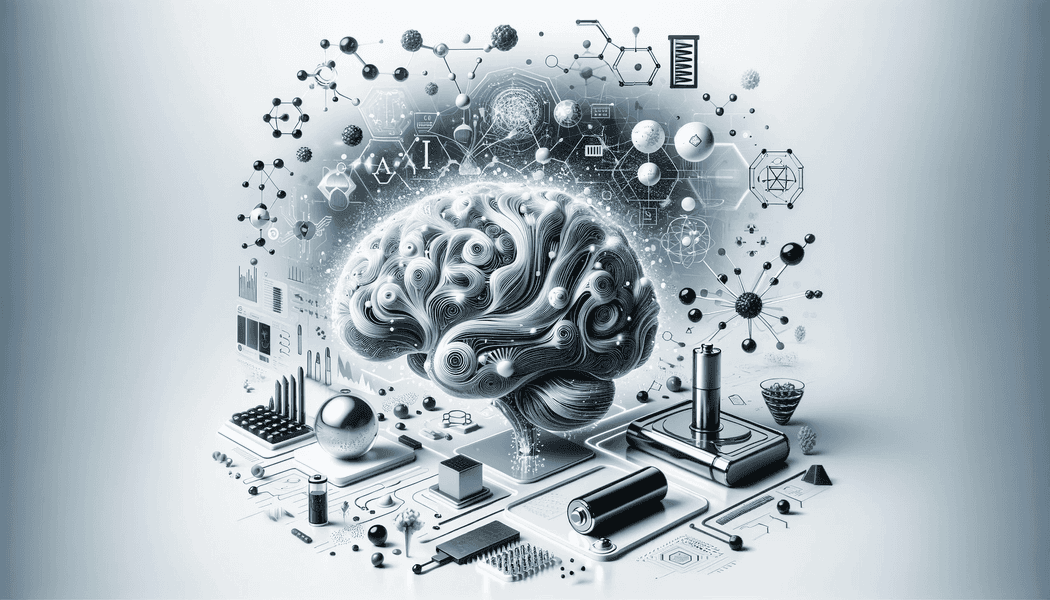AI-powered scientific discovery - Are we ahead of predictions?

In light of the recent paper "Thousands of AI Authors on the Future of AI", which surveyed AI researchers on their predictions about AI progress and its impacts, it's fascinating to examine the actual strides made in AI, particularly in scientific discovery. Two recent developments from Microsoft offer a compelling perspective on this.
AI and HPC: Accelerating Scientific Discovery
Microsoft's Azure Quantum Elements, in collaboration with PNNL (Pacific Northwest National Laboratory), has made significant advancements in the field of battery technology, showcasing how AI and High-Performance Computing (HPC) can dramatically speed up scientific discovery. By sifting through 32 million potential materials and identifying 18 promising candidates for battery development in just 80 hours, they have significantly compressed the timeline of discovery. This process exemplifies a new approach to scientific discovery, where AI bypasses traditional, time-consuming trial-and-error methods, focusing instead on the most promising candidates for testing.
The Solid-State Battery Breakthrough
In a specific instance of this technology, a new type of solid-state battery material was discovered, which uses approximately 70% less lithium compared to existing lithium-ion batteries. This innovation not only addresses the scarcity and environmental concerns associated with lithium but also shows the potential of AI in material science. This discovery, achieved in less than nine months, underscores the ability of AI to accelerate the innovation cycle dramatically.
AI and Azure Quantum Elements: A Paradigm Shift
The integration of AI with Azure Quantum Elements represents a paradigm shift in scientific research and development. This combination is not only about accelerating discovery but also about enabling more accurate and efficient research. With AI models trained on millions of data points, researchers can predict material properties faster than traditional methods, allowing for the rapid screening of millions of candidates.
Comparing with AI Predictions
The predictions from the "Thousands of AI Authors on the Future of AI" paper estimated a 50% chance of AI achieving significant milestones by 2028. However, the developments at Microsoft, particularly in material science, suggest that we might be ahead of these predictions. AI's role in accelerating scientific discovery, especially in critical areas like battery technology and material science, indicates a faster pace of AI advancement than anticipated by many researchers.
Looking Ahead: The Most Spectacular, Easiest, and Fastest Inventions
Looking ahead, the realm of AI and scientific innovation holds immense promise, with certain areas poised for particularly remarkable developments. Among the most spectacular anticipated advancements is the integration of quantum computing with AI. This fusion is expected to revolutionize fields like chemistry and materials science, potentially solving complex problems that are currently beyond the scope of classical computing. On the easier end of development, AI models that predict material properties are emerging as a standout. These models, leveraging existing data and computational frameworks, are not only simpler to develop but also offer wide applicability across various domains, standing out as versatile tools in scientific research. As for the fastest-developing area, AI-driven material discovery takes the lead, as demonstrated by Microsoft's breakthrough in battery material. The ability to rapidly screen millions of materials to identify viable candidates is proving to be a game-changer, significantly impacting numerous industries with its unprecedented speed and efficiency.
Conclusion
The progress in AI, particularly in scientific discovery, is surpassing some of the earlier predictions. The combination of AI with HPC and quantum computing is not just accelerating the pace of discovery but is also opening up new avenues for innovation. These advancements indicate that we may witness more significant and faster breakthroughs in AI-driven technologies than previously anticipated, reshaping industries and potentially addressing some of the world's most pressing challenges.
In this AI landscape, the OpenAI API offers accessible Large Language Models (LLMs) for diverse applications, from natural language processing to creative content generation. This easy integration makes these models a vital resource for leveraging AI's power.
Additionally, the Hugging Face platform enables the fine-tuning of open-source models using Retrieval-augmented generation (RAG) technique for enhancing the accuracy and reliability of generative models with data from external sources. This allows for customization of AI solutions to meet specific needs, broadening the scope for innovation and specialized applications.
These developments in AI and machine learning open up limitless possibilities for scientific and industrial innovation, empowering a diverse range of users to partake in the AI revolution.



